Have you noticed all the buzz about the importance of a healthy gut recently?

There are specials on TV, bestselling books, gut-health websites, and a variety of health experts all urging us to take better care of the flora in our tummies.
It’s not just a passing culinary trend, either.
Every year, new research and studies emerge to substantiate claims that the stomach’s microbiome plays a crucial role in robust health, vitality, and disease prevention.
And one of the key pieces to caring for our bacterial buddies is in the foods we eat. Which is a good thing, because it’s a simple and easy step we can take.
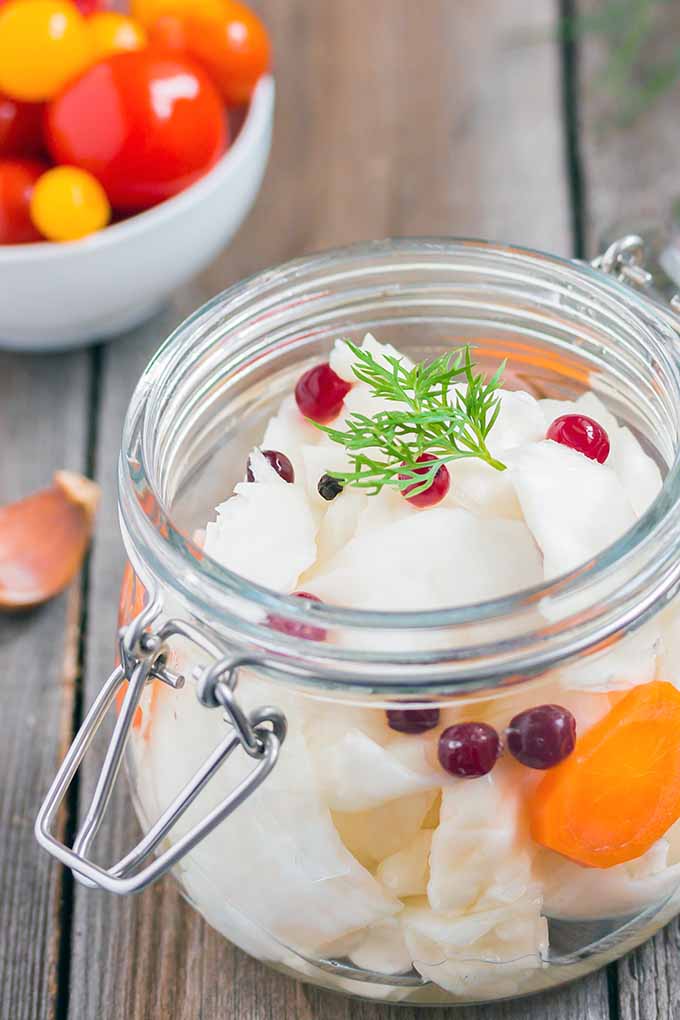
In particular, fermented foods provide an abundance of beneficial bacteria that can help to rebuild and maintain a thriving, healthy microbiome.
So, let’s have a look at some of the readily available fermented foods we can pick up today (or make at home) for friendly gut flora.
The Cream of the Crop: Dairy Products
Yogurt
A natural for gut health, the type that you choose you eat doesn’t matter – regular, Greek, full-fat, low-fat, and even the fruit-flavored ones all work.

The key is to check the label to ensure that your selection contains “live active cultures,” “active bacterial cultures,” or “probiotics.”
As I mentioned, fruity yogurts are okay, but they do have considerably higher levels of added sugar than the plain varieties.
And too much sugar in the diet actually feeds bad bacteria, so choose plain whenever possible.
If you don’t like the taste of plain yogurt, you can dress it up in a sweet parfait by adding your own berries or other types of fruit, a drop of vanilla, a sprinkle of cinnamon, or even a bit of honey to make it more palatable.
We recommend trying it as a creamy base in our frozen yogurt popsicles with oats and blueberries, in our tangy tzatziki sauce, or as a dipping sauce for fried kohlrabi!
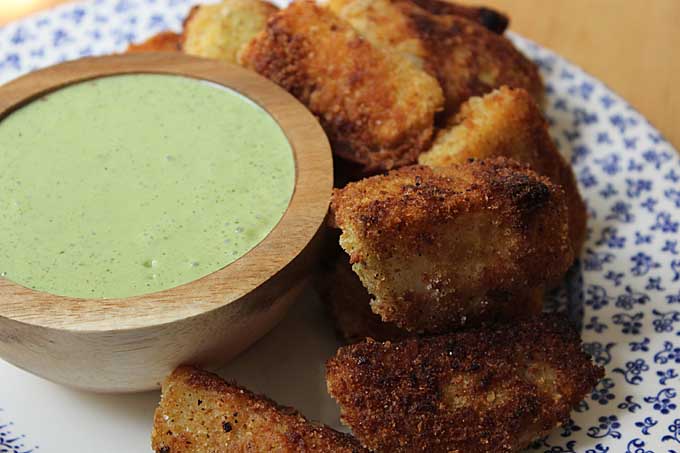
Larger grocery stores usually carry a good selection of cultured goat or sheep’s milk yogurt, as well as cultured soy, almond, and coconut yogurts – all of which have live active bacterial cultures.
But again, check the sugar levels, as some of them can be quite steep.
You can even make your own dairy-free coconut yogurt at home, with our help!
Kefir
As yogurt’s sippable cousin, kefir is a smooth, rich, thick liquid that’s made with a variety of the live active cultures we want.
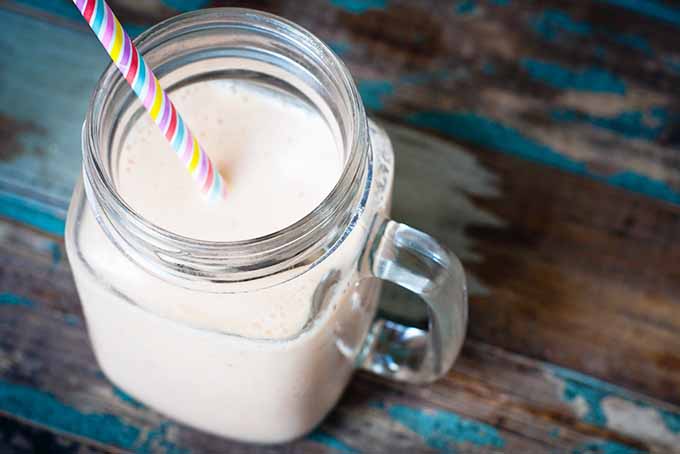
It’s also nearly free of lactose, making it a good option for those with sensitive tummies.
Sensational Soybean Sources
Miso
Made from fermented soybeans, miso paste is teeming with probiotics.

Miso is generally categorized into three colors – white, yellow, and red. But due to the wide variety of producers in Japan, there’s considerable variation in miso shades.
Colors begin with a pale yellow hue and travel through to a deep, dark chocolate brown.
In general, the lighter the color, the milder, less salty, and sweeter the taste.
Light colored miso will also be “fresher,” having the shortest fermentation period. White miso is good in soups (try it in our recipe for easy miso soup!), lightly flavored marinades, and stir-fries.
The mid-tone colors, i.e. the yellows, are slightly stronger in flavor and saltiness than the white variety. These are good in soups, marinades, dressings, and may be used as a glaze for roasted eggplant, poultry or fish and seafood dishes.
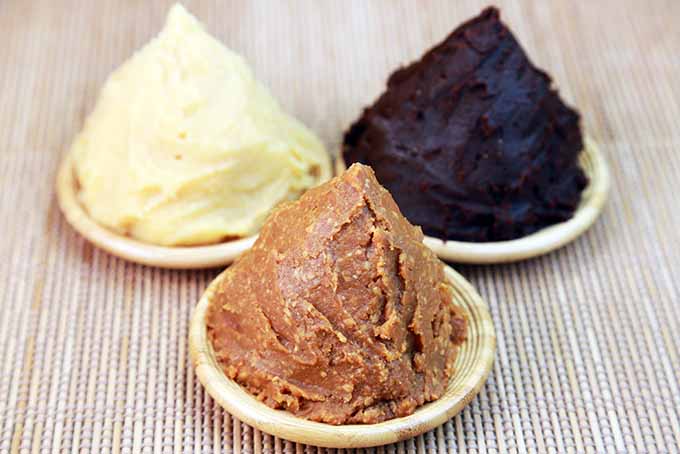
Dark miso, in the red and brown shades, has been fermented the longest and has strong, salty, and pungent flavors.
Use red miso in soups, for dark sauces, or for marinating meat such as lamb, pork, or beef.
Dark brown miso is very strong in taste and needs a light touch when using. Try it with grilled eggplant or tofu, like in our recipe for tofu, green bean, and carrot stir-fry, or add it to stews and braised meat.
It’s important to be aware that miso can also be very high in sodium. Check the label for sodium content if you already have challenges with high blood pressure, as this may not be your best option.
Tempeh
Tempeh is another product made from fermented soybeans, and it is also rich in probiotics.
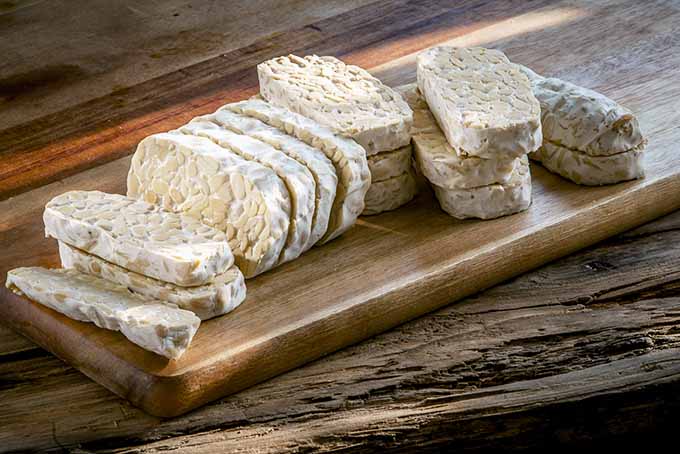
Tempeh is usually molded into bars or cakes, and has a nuttier, sharper taste than tofu. Cubed, it can be added to salads and stir-fries. Slice it thin for sandwiches, or marinate and lightly grill to serve it as an entree.
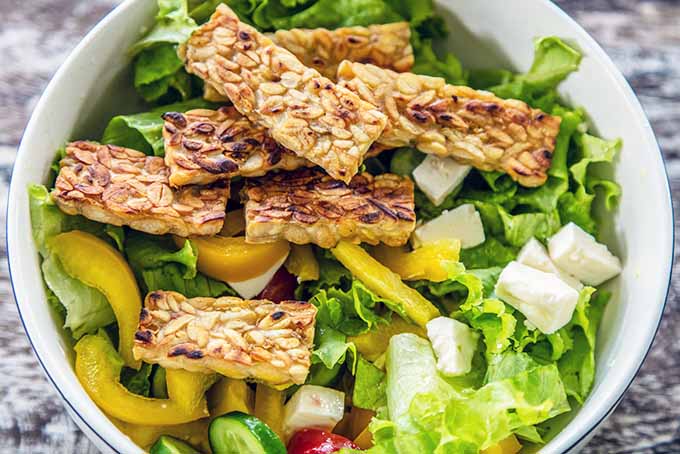
Tempeh is also a good source of protein, at approximately 15 grams per 1/2 cup.
Mother Says: Eat Your Vegetables
Sauerkraut
Piled high with some sauteed onions, sauerkraut can make or break a meaty hot dog!
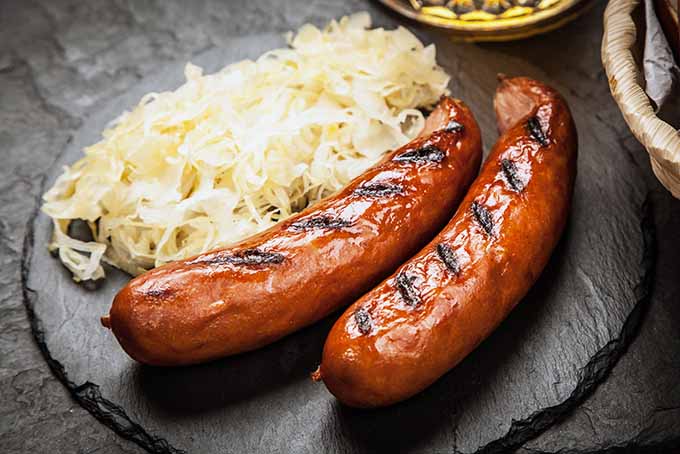
I know – hot dogs and sausages aren’t the best foods for gut health. But for an occasional indulgence, they’re hard to beat!
Seriously though, sauerkraut (i.e. pickled cabbage) can be used as a condiment with pork or corned beef, on sandwiches, in savory strudels, and even in soups.
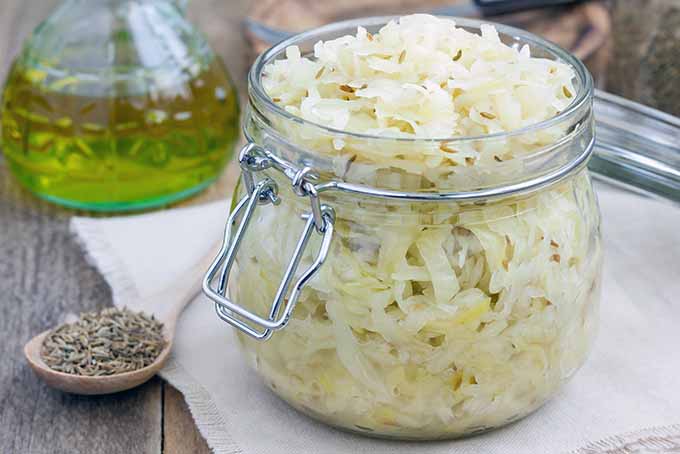
Unfortunately, today’s canning practices of pasteurizing with vinegar result in an absence of the live culture that provides probiotics.
To ensure you get the happy bugs, buy fresh sauerkraut or look for products with “live cultures” on the label in the refrigerated section of your grocery store. Making your own at home is another delicious option.
Pickles
Dill pickles (or any pickled vegetable or fruit) packaged in a brine of salt water offer probiotics.
But, like sauerkraut, if they’ve been pasteurized in a vinegar solution, the good bacteria is dead.
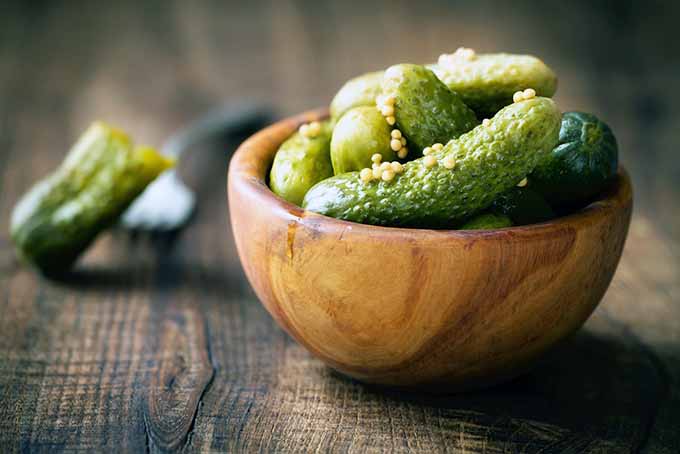
Look for “live cultures” on the label, or for products that are preserved in brine. These will often say they are “lacto-fermented” – and that’s what you want!
Check out our recipe for fermented dill pickles for more details.
Kimchi
A Korean staple, kimchi is made of spices and fermented vegetables such as cabbage, radishes, and scallions.
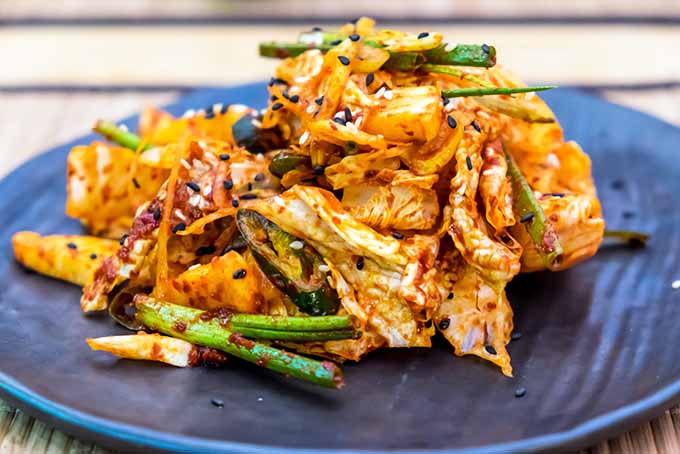
Pungent and spicy, it’s served as a side dish to heat up rice bowls, and as a condiment with meat.
Look for kimchi in the refrigerated section of your grocery store, at Korean markets, or ask if it’s available for purchase in larger quantities from your favorite Korean restaurant.
But if you’re a DIY foodie, you can make your own kimchi! You’ll really enjoy this recipe for Bok Choy Kimchi from The Fitchen for a zesty taste of homemade probiotic goodness.

Love Those Carbs
Sourdough Bread
A mildly tangy bread with a wonderful chewy crust, the starter used for sourdough is made with yeast and the bacteria lactobacillus – the same bacteria used in the production of yogurt.
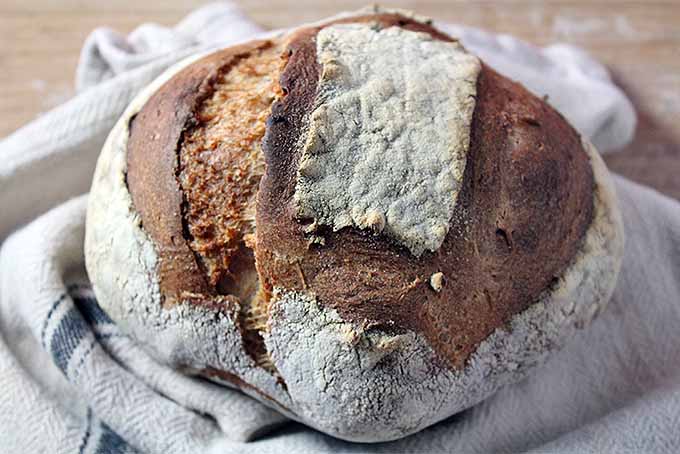
Consume breads in moderation, while increasing your intake of other fermented foods like the pickled veggies listed above.
Satisfy Your Thirst: Beverages
Kombucha
Kombucha is a naturally fermented, fizzy drink made from green and black teas, with a healthy amount of probiotics in each refreshing cup you drink.
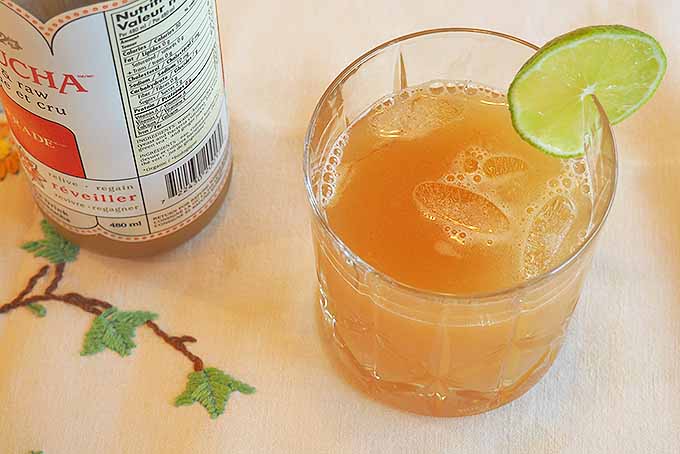
Kombucha sold in the refrigerated juice section of the grocery store has a very low alcohol content of about 0.5 percent, and is considered non-alcoholic.
But there are also varieties that you may find stocked in the beer and wine section with a higher percentage, so do check the label to be sure.
Available in a variety of flavors, it makes a refreshing drink when chilled. Add it to tasty cocktails and healthy mocktails for your own spritzy spin on mixed drinks!
Read more about how to make it now.
Kvass
Originally made from the fermentation of stale sourdough rye bread in the Baltic, Slavic, and Ukraine regions, kvass is another non-alcoholic beverage with plenty of probiotics.
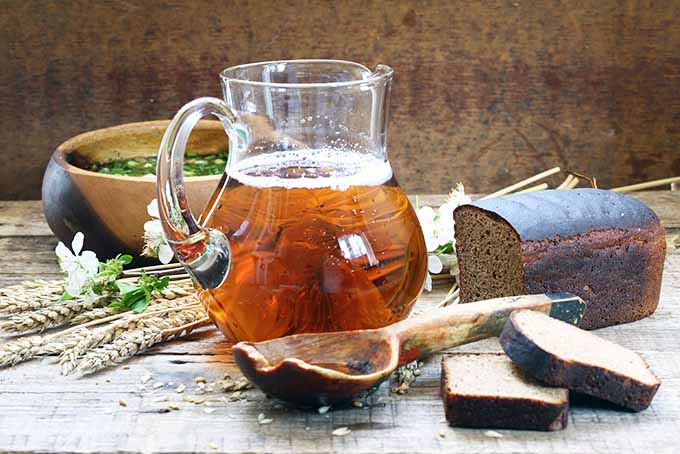
Being a fermented beverage, like kombucha, kvass may also have a low percentage of alcohol.
Popular modern variations include beet kvass, and blends of vegetable and fruit juices. Look for it in the beverage section of your grocery store.
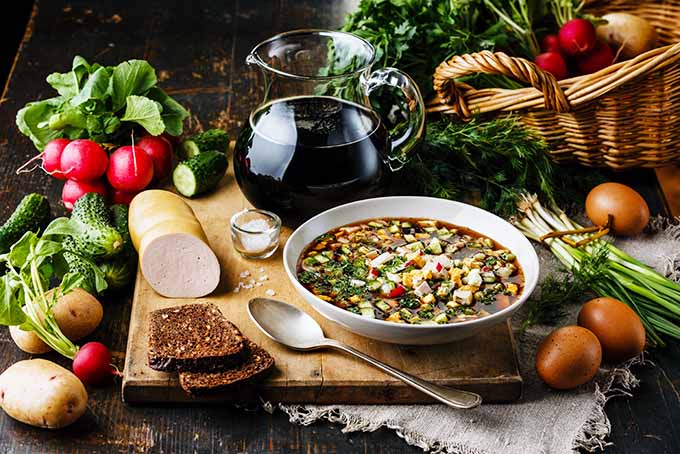
Want a few more ideas for probiotic-happy drinks? Take a look at our post on drinking vinegars and shrubs to make tasty cocktails and healthy mocktails!
Happy Tummy, Healthy You
To make the most of fermented foods, start small with one or two half-sized servings per day to allow your system to adjust – too much of a good thing at the start might produce uncomfortable bloating or gas pain.
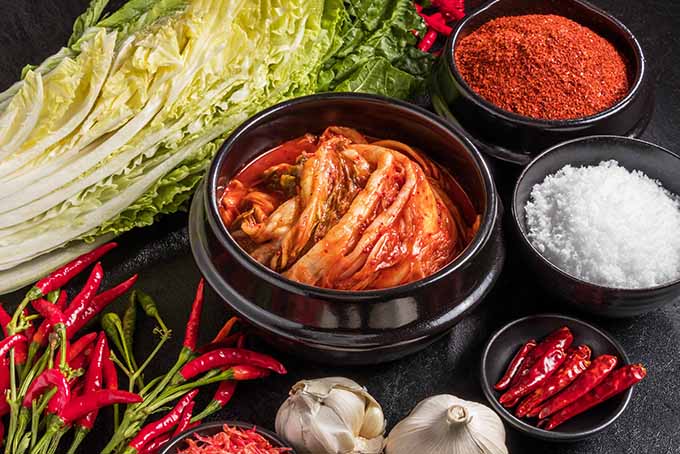
As your body replaces the unhealthy bacteria with good ones, add one additional serving per week until you’re enjoying a full serving with two or three meals daily.
And when shopping, remember that pasteurization kills off beneficial bacteria – so check the labels to ensure they provide the live active cultures needed for a thriving microbiome.
By regularly adding fermented foods to your diet, you’ll be well on the way to a happy, healthy gut!
If you like the idea of making your own fermented foods and beverages at home, The Art of Fermentation is a great place to start. Author Sandor Katz’s expert guide is available on Amazon.
Already on a roll with your own fermentation projects? Try adding some fun spice to what you make! Listen to episode 4 of the Foodal Podcast, where managing editor Allison Sidhu discusses the world of spicy, fermented condiments with Kirsten and Christopher Shockey, fermentation experts and authors of a new cookbook called Fiery Ferments.

How do you incorporate these scrumptiously sour delights in your diet? Let us know what foods you like to feed your microbiome in the comments below!
Photo credits: Jordan Cord, © The Fitchen, Lorna Kring and Kendall Vanderslice, © Ask the Experts, LLC. ALL RIGHTS RESERVED. See our TOS for more details. Uncredited photos: Shutterstock.
The staff at Foodal are not medical professionals and this article should not be construed as medical advice. Foodal and Ask the Experts, LLC assume no liability for the use or misuse of the material presented above. Always consult with a medical professional before changing your diet, or using supplements or manufactured or natural medications.
About Lorna Kring
Recently retired as a costume specialist in the TV and film industry, Lorna now enjoys blogging on contemporary lifestyle themes. A bit daft about the garden, she’s particularly obsessed with organic tomatoes and herbs, and delights in breaking bread with family and friends.

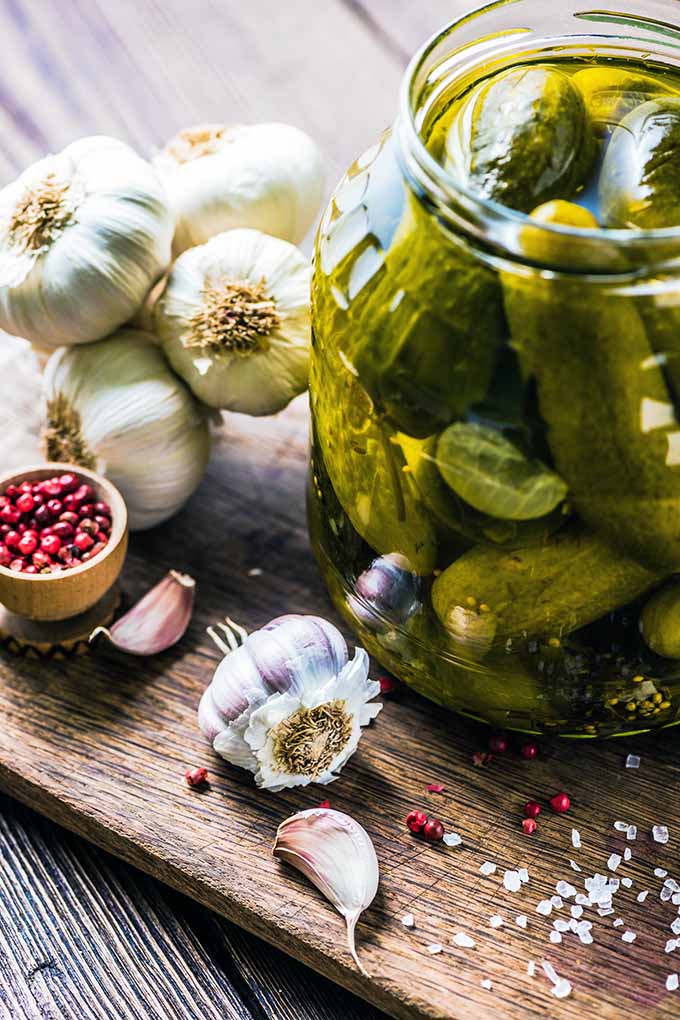



Such an interesting read! I consume a lot of plain Greek yogurt, we often have miso soups and sourdough bread, but never tried (or liked) all the other food listed (pickles, yuck!) But I do know that fermented foods are so good for your health 🙂 . Thanks fo all the information and suggestions!
Glad you found it an interesting read Nicoletta, and isn’t it good to have a well-rounded selection to choose from!
Great article.
lots of nice information there, in particular, the part about slowly adding the foods. I ‘m an all or nothing person, so knowing that has helped massively ???? I would have eaten ten portions in a week and then decided the bloating was a bad sign and never eaten it again!!